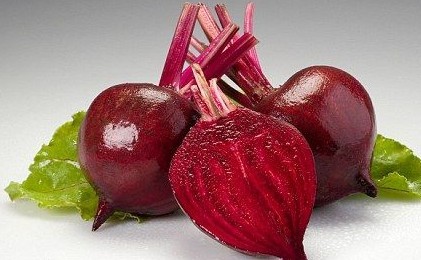The beet (Beta vulgaris) is a plant in the Chenopodiaceae family which is now included in Amaranthaceae family. It is best known in its numerous cultivated varieties, the most well known of which is the purple root vegetable known as the beetroot or garden beet. Beta vulgaris is a herbaceous biennial or, rarely, perennial plant with leafy stems growing to 1–2 m tall.
The roots and leaves of the beet have been used in folk medicine to treat a wide variety of ailments. Ancient Romans used beetroot as a treatment for fevers and constipation, amongst other ailments. Apicius in De re coquinaria gives five recipes for soups to be given as a laxative, three of which feature the root of beet. Hippocrates advocated the use of beet leaves as binding for wounds.
All parts of the beet plant contain oxalic acid. Beet greens and Swiss chard are both considered high oxalate foods which have been implicated on the formation of kidney stones. Commonly cultivated. in China [native to N Africa, SW Asia, and Europe; widely cultivated].
| Catalog | Product Name | CAS Number | Manual |
|---|---|---|---|
| CFN99547 | Betaine hydrochloride | 590-46-5 | |
| CFN99546 | Betaine | 107-43-7 | |
| CFN98551 | Citric acid | 77-92-9 | |
| CFN98117 | Beta-Carotene | 7235-40-7 | |
| CFN98511 | Tricine | 5704-04-1 | |
| CFN93249 | Inosine | 58-63-9 | |
| CFN90463 | Vanillin | 121-33-5 | |
| CFN90580 | 3,4-Dimethoxybenzyl Alcohol | 93-03-8 | n/a |
| CFN80067 | 5'-IMPdisodium salt | 4691-65-0 | n/a |
A unique collection of 21 natural compounds from Angelica dahurica(Fisch.et Hoffm.)Benth.et Hook.f.ex Franch.et Sav.cv.Hangbaizhi Hort.
A unique collection of 24 natural compounds from Zingiber officinale Roscoe
A unique collection of 33 natural compounds from Scutellaria barbata D.Don
A unique collection of 25 natural compounds from Rheum palmatum L.
A unique collection of 21 natural compounds from Coptis chinensis Franch.





